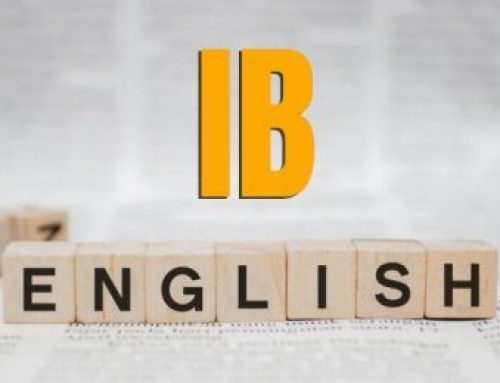The Higher Level (HL) Biology Internal Assessment (IA) is a crucial component of the International Baccalaureate (IB) program. It allows students to delve deep into a scientific topic of their choice and showcase their research and analytical skills. In this guide, we will focus on the preliminary pages of the Biology IA, specifically the Title Page and the Content Page, which lay the foundation for a well-structured and successful IA.
Preliminary Pages
Generally, in a HL Biology IA, these pages refer to the Title Page and the Content Page. They come before the actual IA sections and write-up and usually do not require a page number.
Many IB students tend to place these pages on the last of their Biology IA to-do-list. However, we would advice that you do it first.
Title page
The Title Page is more than just a formality; it sets the tone for your entire IA. It should contain the following elements:
- Title (e.g. “A study investigating…”)
A clear and concise title that reflects the essence of your study, such as “A Study Investigating the Impact of X on Y as Shown by…”
- Research Question
It has to include both the dependent and independent variables.
- Relevant details such as the scientific name of the organism (if applicable), units, time, and location.
Content Page
The Content Page serves as an organized outline of your IA. It should include the following sections:
- Title and Research Question
- Introduction
- Background Information
- Hypothesis
- Variables (Independent, Dependent, Controlled, and Uncontrolled)
- Apparatus
- Preliminary Experiment (with a focus on its relevance to the main experiment)
- Procedure
- Risk Assessment
- Processed Data
- Analysis (including statistical calculations and graph details)
- Evaluation
- Conclusion
- Bibliography
IA Layout
The IA Title and Research Question
Identify a broad topic statement, ensuring that your research question is stated and includes both the dependent and independent variables. For example, What is the effect of X on Y as shown by… ? Your research question should include the following, where appropriate:
- The organism (if appropriate) has a scientific name
- Units
- Time
- Location
Including the following will allow you to effectively convey clarity in your research question, and thoroughly explain what you will be investigating.
Introduction and Background Information
Introduction:
Your introduction is rooted in background information about the organism and or the topic that you will be investigating in your IA. You should demonstrate strong personal engagement by a statement of purpose. For instance, you would avoid using cliche phrases such as “I have always loved..”, but rather opt for phrases that clearly illustrate your passion with the real, outside world, or your genuine reason for choosing the topic that you will be investigating.
Background info:
Go on to enhance your understanding of your research question while ensuring that your background information is:
-
- Relevant
- Focused
- Within context of the range of independent variables
- Within context of the dependent variables being used
- In-text cited, based on the referencing systems used in your school (e.g. Harvard/ MLA referencing)
- Supported by a preliminary experiment through the inclusion of a short paragraph about how it was carried out, to show your clarity on how you would conduct your main experiment.
While conducting a preliminary experiment shows great engagement, many students do not do it/are not able to carry one out for various different reasons. If you have not carried out a preliminary experiment, research and describe the following instead :
- Range and intervals of your independent variables
- How you will be measuring your dependent variable
Hypothesis
Null hypothesis :
For example,
“There is no statistically significant association between X and Y .”
Alternative hypothesis :
Your alternative hypothesis is an alternative theory that is suggested with direct polarity to the null hypothesis.
For example,
“There is a statistically significant association between X and Y.”
Variables
- Independent, dependent and controlled variables are clearly stated
- Ensure to have at least 5 intervals and at least 15 repeats for each interval
- Explain how and why you are using those variables, how certain variables may not be controlled, and how you minimise the effects of these to suit it to your experiment effectively
Apparatus
Ensure that all apparatus, chemicals and solutions are listed and / or shown in a diagram if relevant and all apparatus used are relevant. (Not an obligatory list, can be given in the method)
Preliminary Experiment
The Preliminary Experiment is often overlooked, but it holds immense value in shaping your main investigation. Students can improve this section by linking it seamlessly to their IA. Describe how the preliminary experiment influenced your methodology, analysis, and decision-making process. If you haven’t conducted a preliminary experiment, research and discuss the range and intervals of your independent variables and the method of measuring the dependent variable.
Method
Your method section demonstrates that you have sufficient data that has been collected, and that you have thoroughly reflected on each method of control.
Ensure to :
- Outline method in a step by step, list-like format
- Reflect on every controlled variable in the method while explaining
- State that you have : “Repeated method ____ for verification” at the end of every section.
Risk assessment to ensure safety
Include a risk assessment of apparatus and chemicals and show awareness of:
- safety
- ethical issues – eg handling of animals
- environmental issues – eg impact on field sites
Processed Data
Once you have collected your raw data, the next step is to process and organize it for analysis. The Processed Data section is where you present your data in a structured manner, making it easier for readers to interpret and draw conclusions. Follow these steps to effectively present your Processed Data:
- Data Organization
Begin by organizing your data in a clear and systematic way. You can use tables, charts, or graphs, depending on the type of data you collected. Ensure that each piece of data is properly labeled and includes units, where applicable. - Data Manipulation
In some cases, you might need to manipulate the data to calculate specific values or derive meaningful insights. Show your calculations and formulas used for any data manipulations, and explain the rationale behind these transformations. - Averaging and Standard Deviation
When presenting numerical data, consider calculating the averages and standard deviations if relevant. These statistical values provide insights into the central tendency and variability of your data points.
Analysis
The Analysis section is where you interpret your processed data and draw meaningful conclusions from your findings. To conduct a comprehensive analysis, consider the following steps:
- Statistical Calculations
Based on the nature of your data, choose appropriate statistical calculations to support your analysis. Depending on your research question and data type, you might use measures like mean, median, mode, range, standard deviation, t-test, chi-square test, etc. Mention the statistical methods you used and why they are appropriate for your investigation. - Graphs and Visualizations
Graphs and visualizations are powerful tools to represent your data visually. Create clear and accurate graphs that effectively illustrate the trends, patterns, and relationships present in your data. Choose appropriate graph types, such as bar graphs, line graphs, scatter plots, or pie charts, based on the variables you are analyzing. - Data Interpretation
Thoroughly interpret the patterns and trends depicted in your graphs and statistical results. Explain the significance of any relationships observed and how they relate to your research question. Use evidence from your processed data and refer to relevant scientific principles to support your interpretations.
Analysis :
Ensure that your analysis section includes sufficient correlated qualitative and quantitative observations, anomalies that have been clearly pointed out and explained, statistical tests and graphs that explain the data collected.
The figure below is an example graph taken from a model IA, where the student has clearly presented information in a graph.
Evaluation
In the Evaluation section, critically assess your investigation and methodology. Address strengths and weaknesses, reflect on potential sources of error, and suggest improvements for future studies. Consider the following points for a well-rounded evaluation
- Methodological Considerations
Discuss any limitations or challenges you encountered during your investigation. Analyze how these factors might have influenced your results and propose ways to mitigate potential errors. - Reliability and Validity
Reflect on the reliability and validity of your data and methods. Identify factors that could have impacted the accuracy and generalizability of your findings. - Sources of Error
Be honest about any sources of error that might have affected your results. Consider experimental errors, sample size, or unexpected external factors that could have influenced your outcomes.
Evaluation :
- Conclude by making explicit reference to the research question. In other words, your conclusion should directly answer the question : “Does the data answer the Research Question?”
- State if your null hypothesis is accepted or rejected
- Refer to the graph and data points to clearly demonstrate your understanding and strong conclusion
- Compare the conclusion with published data and predictions
(A good tip here is to put your graph in and next to it put a graph from a textbook or website. Can you either explain any differences or relate it to scientific theory?)
- Strengths and weaknesses of your investigation
- Further extensions that could have been carried out.
Figure 1 : Model student IA graph


Conclusion
The Conclusion section is where you summarize your key findings and directly address your research question. Follow these steps for an effective conclusion:
- Restate the Research Question
Begin by restating your research question to remind readers of the central focus of your investigation. - Answer the Research Question
Clearly state whether your research question was supported or rejected by the evidence presented in your analysis. Use your processed data, statistical calculations, and graphs to support your conclusion. - Relate to Scientific Theory
Connect your findings to established scientific principles or theories. Discuss how your results align with existing knowledge in the field of biology.
Bibliography
Finally, provide a comprehensive list of all the sources you used in your research. Include academic papers, textbooks, websites, and any other references you consulted. Use the appropriate citation style, such as Harvard or MLA, as required by your school or institution.
Sample IA marked and annotated :
http://xmltwo.ibo.org/publications/DP/Group4/d_4_biolo_tsm_1408_1/pdf/investigation_1b_e.pdf
If in doubt, reach out to experienced tutors at Quintessential Education for extra help and guidance. Start your journey towards academic success today!




